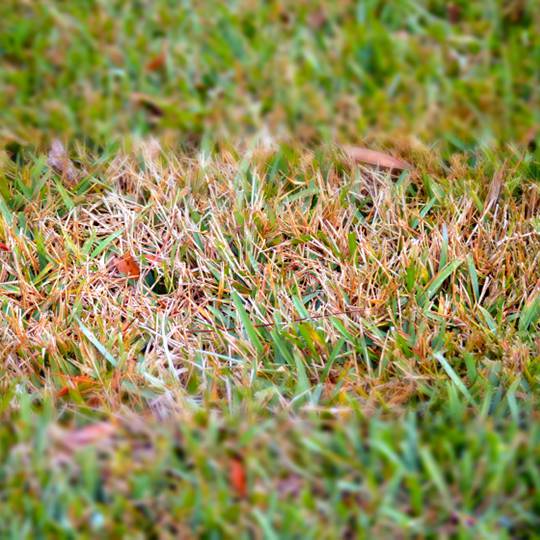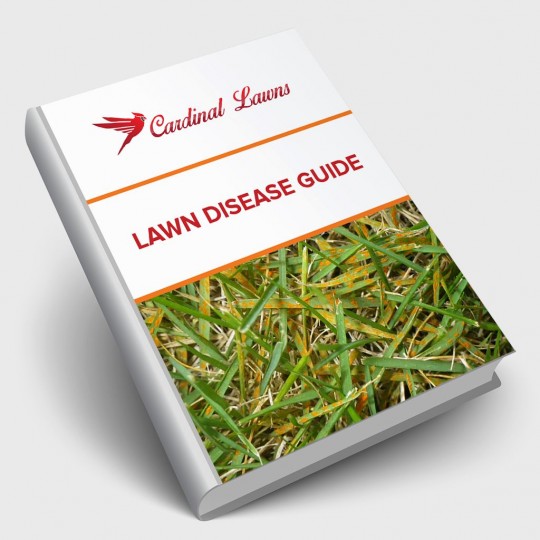Identifying Lawn Diseases
Posted
March 10, 2016

Every lawn is subject to bouts of lawn disease. Though the diseases vary in severity, some can devastate your lawn with symptoms that include discoloration, poor growth, or even dead patches. It is important to vigilantly monitor your lawn as it leaves the dormancy stage of winter and enters its growing season. Read on to learn how to identify five common lawn diseases that affect all grass types.
Brown Patch
Brown patch (Rhizoctonia solani) infects lawns in hot, humid conditions by killing individual leaves and blades of grass. This fungal disease shows up on the surface of grass blades in circular brown patches, sometimes with tell-tale strands of gray mycelium fungus that appear in the morning dew. Brown patch usually starts as a small spot that spreads into a circular or horseshoe pattern that spans in size from 1 to 5 feet.
Dollar Spot
Dollar spot (Sclerotinia homoeocarpa) is most common in warm, moist weather. This fungal disease appears as a circular patch the size of a silver dollar. Eventually it grows into a larger patch that kills infected grasses as it expands. Dollar spots are caused by a fungus that attacks wet grass and leaves brown lesions on the blades.
Leaf Spot
Leaf spot (drechslera, bipolaris, exserohilum) appears as yellow circles with dark centers that infect grass blades, eventually giving your lawn a yellowish hue. Leaf spot usually forms in cool, moist conditions and on lawns with grass that has been mowed too short. The “melting out” stage of leaf spot occurs when weather warms up and large, noticeable discolorations take form on your turf.
Red Thread
Red thread (Laetisaria fuciformis) is a fungal disease that commonly attacks nitrogen-deprived lawns. Most prevalent in cool, moist conditions, red thread is named for the pink-red threads that form around grass blades, binding them together. The infected grass eventually turns an unsightly brown.
Summer Patch
Summer patch (magnaporthe poae) is recognizable by the circular patches of dead grass it creates on an infected the lawn. These patches may grow to form ring- or crescent-shaped patches, often with an outer ring that ranges from yellow to bronze in color. Summer patch is distinguished by an inspection of the grass roots. If you pull up a tuft of grass and its roots are dark brown or black and short, it means they are rotting as a result of summer patch. Healthy roots will be longer and lighter in color.
Say “Goodbye” to Lawn Disease
By familiarizing yourself with the signs of lawn disease, you are more likely to be able to identify an outbreak early, before it can cause too much damage. Some lawn diseases are still somewhat difficult to recognize, though. That’s where Cardinal Lawns comes in. Contact us with any questions and we’ll help diagnose and treat your infection in order to make your lawn look its best.

Download Your FREE Lawn Disease Guide
Even the most manicured landscapes are susceptible to lawn disease. Take some time to learn about identification and removal before one takes over your lawn. This handy guide teaches you how to spot common lawn diseases as well as how to properly treat them.